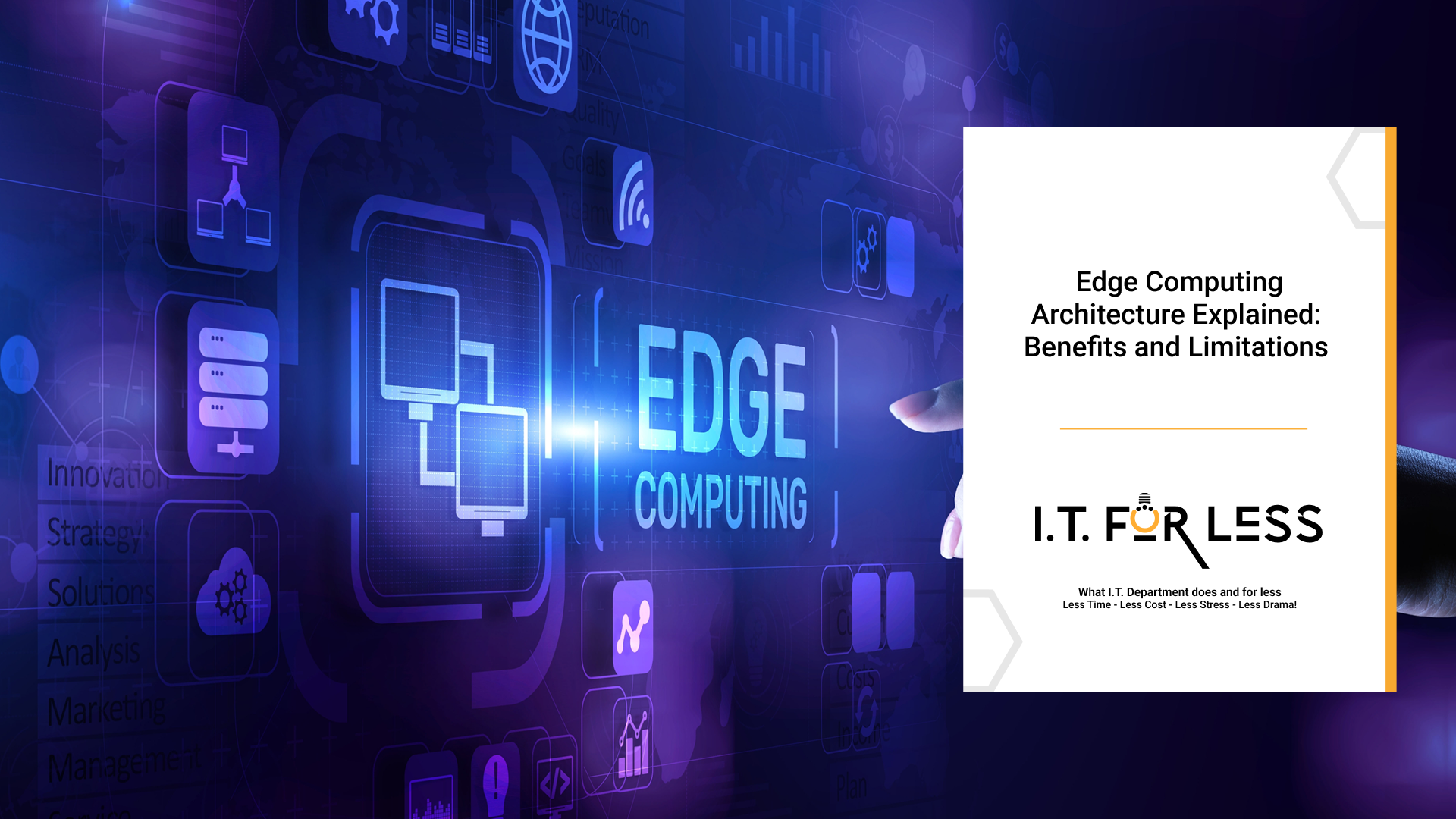As data generation grows at unprecedented levels, businesses are looking for ways to process and analyze information faster and closer to the source. This is where edge computing comes in. Instead of sending all data to a centralized cloud, edge computing distributes processing power closer to devices, sensors, and end-users. But like any technology, it comes with both advantages and challenges.
What Is Edge Computing Architecture?
In traditional cloud computing, data travels from devices to remote data centers for processing. Edge computing changes this by placing compute resources—such as micro data centers or gateways—closer to where the data originates.
A typical edge computing architecture includes:
- IoT devices/sensors generating raw data
- Edge nodes or gateways processing data locally
- Cloud infrastructure for storage, analytics, and long-term insights
- Networks (5G, Wi-Fi, etc.) connecting edge and cloud environments
This layered model balances speed, efficiency, and scalability, giving enterprises the best of both worlds.
Benefits of Edge Computing
- Reduced Latency
Processing data closer to the source means faster response times—critical for applications like autonomous vehicles, real-time monitoring, and AR/VR.
- Improved Reliability
Edge devices can operate independently, even with intermittent connectivity, ensuring mission-critical operations continue without disruption.
- Bandwidth Optimization
By filtering and analyzing data locally, businesses reduce the need to send massive volumes to the cloud, lowering costs and easing network strain.
- Enhanced Security and Compliance
Keeping sensitive data closer to its origin minimizes exposure during transmission and supports compliance with regulations that require local data storage.
- Scalability for IoT and 5G
Edge computing makes it possible to support large-scale IoT deployments and leverage 5G’s low-latency, high-speed capabilities.
Limitations of Edge Computing
- Complex Management
Distributing compute resources across many edge locations increases complexity in deployment, monitoring, and maintenance.
- Higher Initial Costs
Building and maintaining edge infrastructure requires upfront investment in hardware, software, and skilled talent.
- Security Risks at Scale
While edge can improve data security, the sheer number of distributed endpoints expands the potential attack surface.
- Integration Challenges
Ensuring seamless communication between edge devices, cloud platforms, and legacy systems can be technically demanding.
- Limited Processing Power
Edge nodes often have less capacity than centralized data centers, meaning some workloads still require cloud resources.
Conclusion
Edge computing architecture offers powerful benefits for businesses needing speed, efficiency, and real-time decision-making. However, organizations must balance these advantages against challenges like complexity, security, and integration.
The smartest approach is a hybrid model, where edge handles time-sensitive workloads while the cloud manages storage and advanced analytics.
Partner with I.T. For Less today and take the first step toward building an edge computing strategy that keeps your IT flowing as effortlessly as your ambition.
